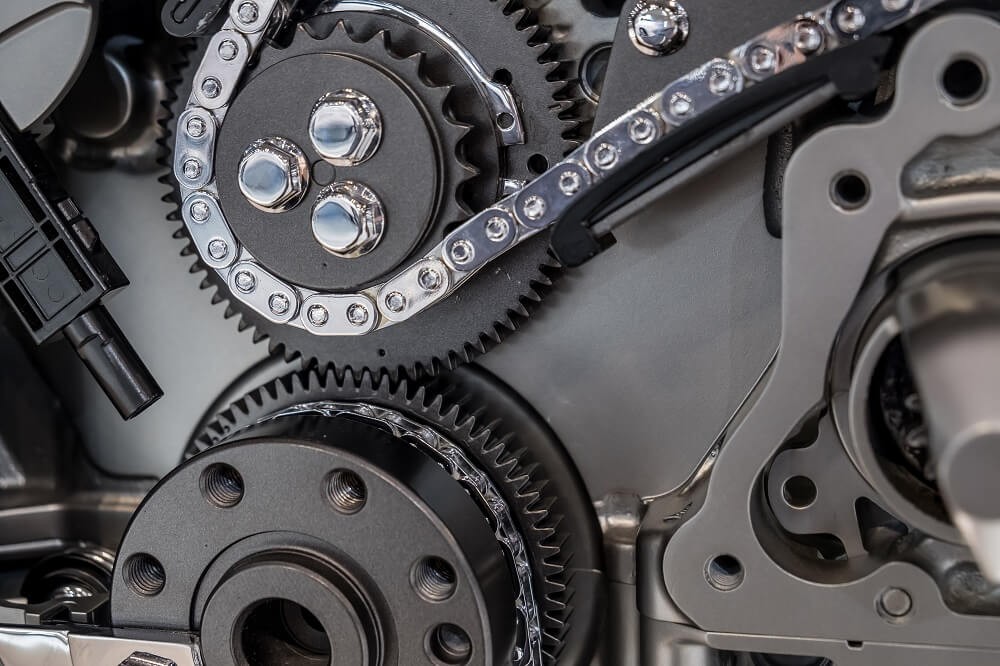The dreaded check engine light illuminating your dashboard can be a source of anxiety for any car owner. It signals a problem that requires attention and likely, some expense. When this light appears, your car’s Engine Control Unit (ECU) logs a fault code, readable with an OBD II scanner. One such code is the P0320, which can not only trigger the check engine light but potentially prevent your car from starting. This guide will delve into the Eobd/obdii P0320 code, explaining its meaning, causes, symptoms, diagnosis, and solutions.
Decoding the P0320 Code: Ignition/Distributor Engine Speed Input Circuit Malfunction
The P0320 code signifies an “Ignition/Distributor Engine Speed Input Circuit Malfunction.” This indicates a problem with the crankshaft or camshaft position sensor, responsible for monitoring the rotational speed and position of these critical engine components. The ECU relies on accurate readings from these sensors to control fuel delivery and ignition timing.
What Triggers the P0320 Code?
Several potential culprits can trigger the P0320 code:
- Faulty Sensors: The most common cause is a malfunctioning camshaft or crankshaft position sensor. These sensors are exposed to high temperatures and vibrations, making them susceptible to failure over time.
- Wiring Issues: Loose connections or damaged wiring in the sensor circuits can disrupt signal transmission, leading to the P0320 code.
- Weak Battery: A surprisingly frequent cause is a weak or failing battery. Insufficient voltage can interfere with sensor operation.
- Ignition System Problems: Issues within the ignition system, such as a faulty distributor (in older vehicles), can also trigger this code.
- ECU Malfunction: In rare cases, a malfunctioning ECU itself can be the root cause.
Recognizing P0320 Symptoms
The P0320 code often manifests through these symptoms:
- Illuminated Check Engine Light: The most obvious symptom is the glowing check engine light on your dashboard.
- No-Start Condition: The engine may crank but fail to start, especially in European vehicles. This occurs because the ECU lacks the necessary sensor data to manage fuel and ignition properly.
- Engine Stalling: A failing crankshaft position sensor can cause the engine to stall unexpectedly while driving, posing a serious safety hazard.
- Rough Running: The engine might run rough or misfire due to inaccurate timing information.
Diagnosing the P0320 Code
Diagnosing the P0320 code requires a systematic approach:
-
Confirm the Code: Use an OBD II scanner to verify the P0320 code and check for other related codes.
-
Inspect the Battery: Test the battery voltage to ensure it’s within the recommended range. A weak battery should be replaced.
-
Check Sensor Connections: Visually inspect the connectors for the crankshaft, camshaft, and ignition/distributor engine speed sensors for looseness, corrosion, or damage.
-
Test Sensors: Use a multimeter to test the sensors’ resistance and voltage according to the manufacturer’s specifications. This step often requires some technical expertise.
Fixing the P0320 Code
Resolving the P0320 issue depends on the diagnosed cause:
-
Replace Faulty Sensors: If a sensor is determined to be faulty, replace it with a quality OEM or equivalent part.
-
Repair Wiring: Repair or replace any damaged or loose wiring in the sensor circuits.
-
Address Ignition Problems: If the ignition system is implicated, address the specific issue, such as replacing a faulty distributor or spark plugs.
-
Replace or Update ECU: If the ECU is faulty, it may need to be replaced or reprogrammed with updated software.
Can You Drive with a P0320 Code?
While driving short distances with a P0320 code might be possible, it’s not recommended. The potential for engine stalling creates a safety risk. Addressing the issue promptly prevents further damage and more costly repairs down the line.
Conclusion: Addressing the P0320 Code Head-On
The EOBD/OBDII P0320 code signals a potentially serious issue that shouldn’t be ignored. While a simple battery replacement might be the solution, more complex problems may require professional diagnosis and repair. By understanding the code’s meaning, potential causes, and symptoms, you can take the necessary steps to resolve the issue and ensure your vehicle’s safe and reliable operation.

